During a scientific expedition in Antarctica, my documentation work of the expeditioners was nuanced by the change in the subjective experience of time and the sensory perception of the extreme environment.

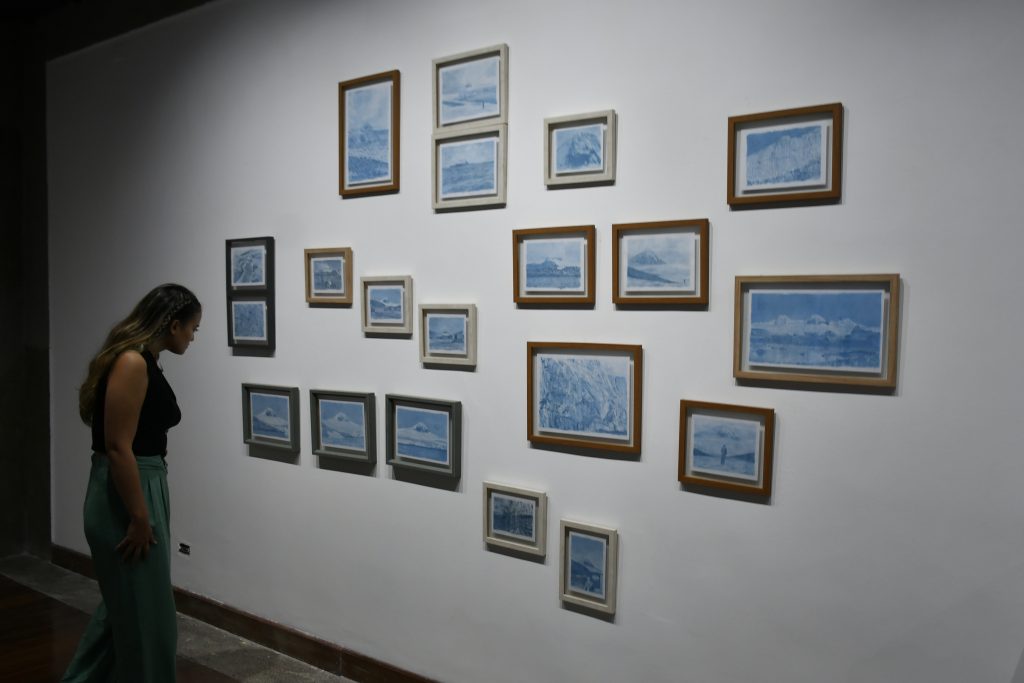
I remember the view of the mountain on those February mornings
Trypan blue (substance used in the laboratory to identify and separate live and dead cells and tissues.) and glacier water on paper
In the background, near the station, stood Mount Plymouth, which I photographed daily and then reproduced in paintings, each representing a day at the station along with notes on the weather conditions.
There are nods to the history of 19th-century landscape painting, referencing the expeditions to conquer the South Pole and the consolidation of the genre as a construction of an imaginary. However, the landscape genre is reinterpreted as an event based on the place where the gaze and the body occupy space, the relationship with my time and atmospheric time, the changes in climatic conditions, and highlighting the unstable nature of territorial representation, as well as the deep awareness of the transitory state of my stay at the station.
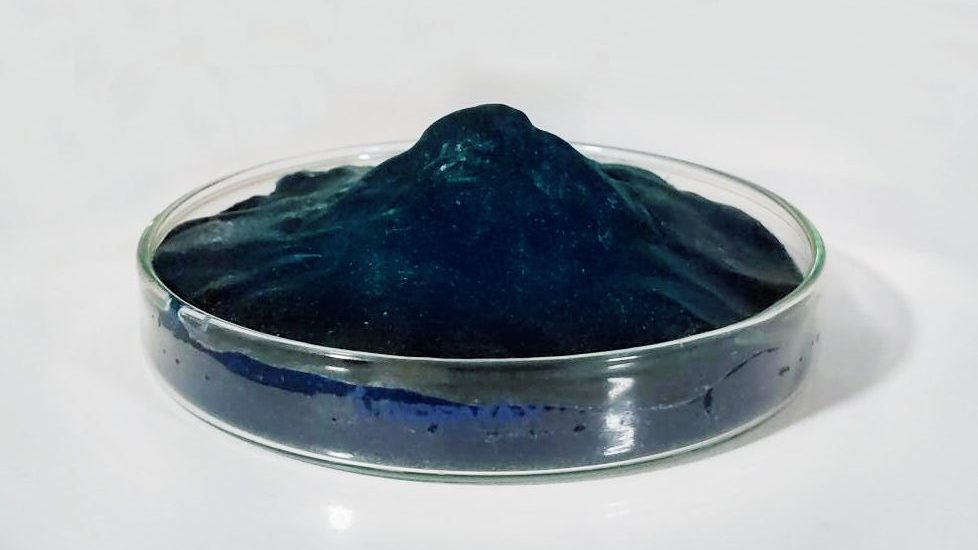
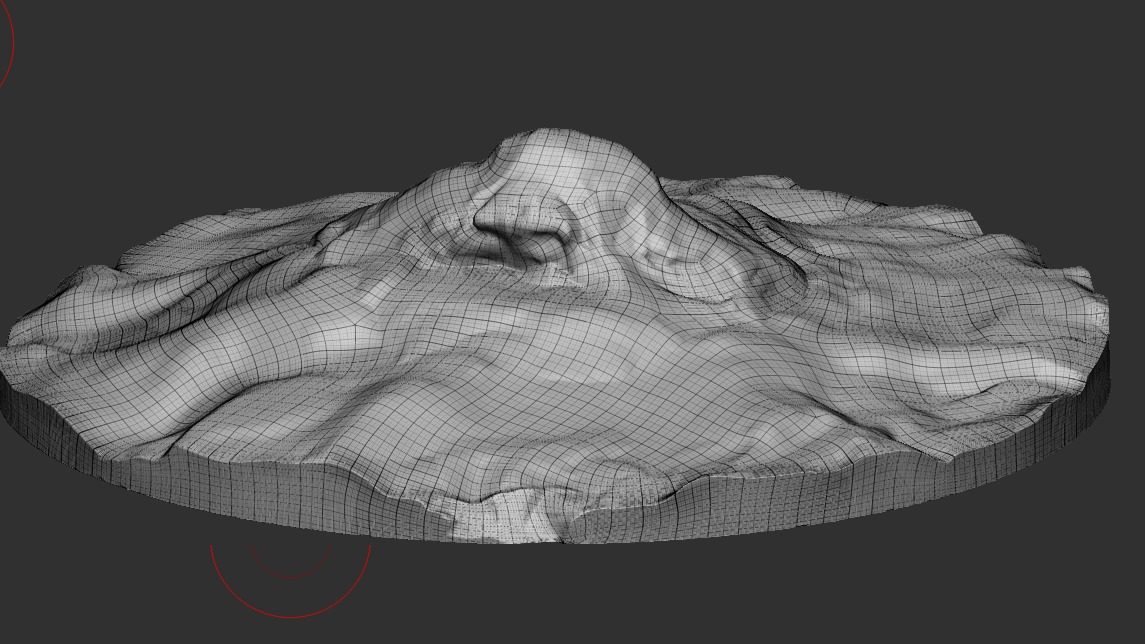
Mt Plymouth
Trypan blue, Greenwich island sediments and resin in petri dish
Scale model of Mount Plymouth to fit in a Petri dish.
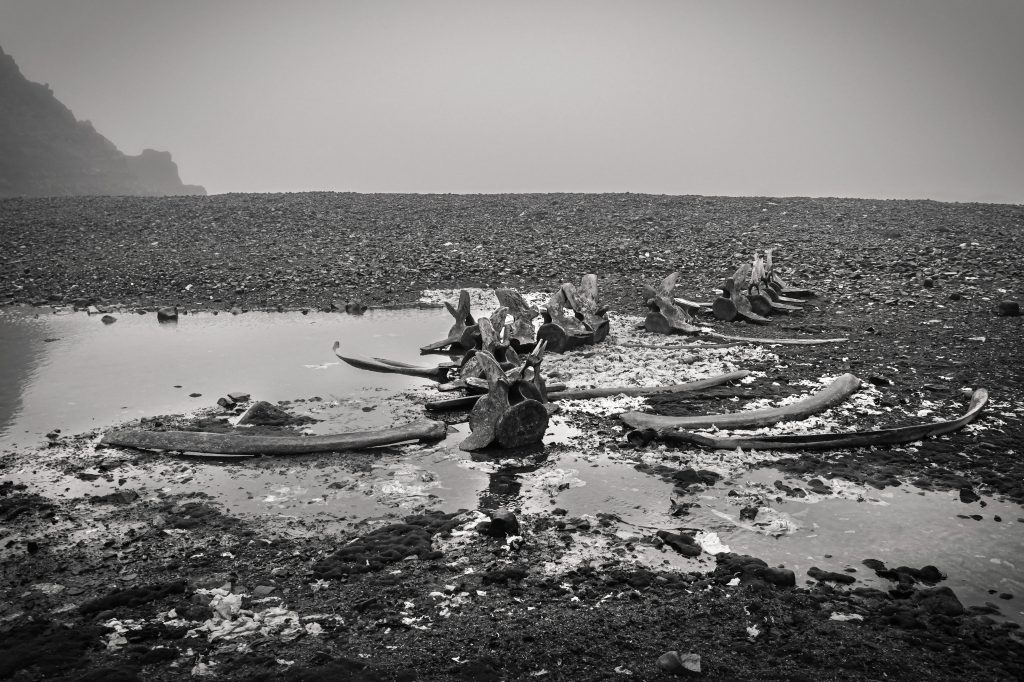

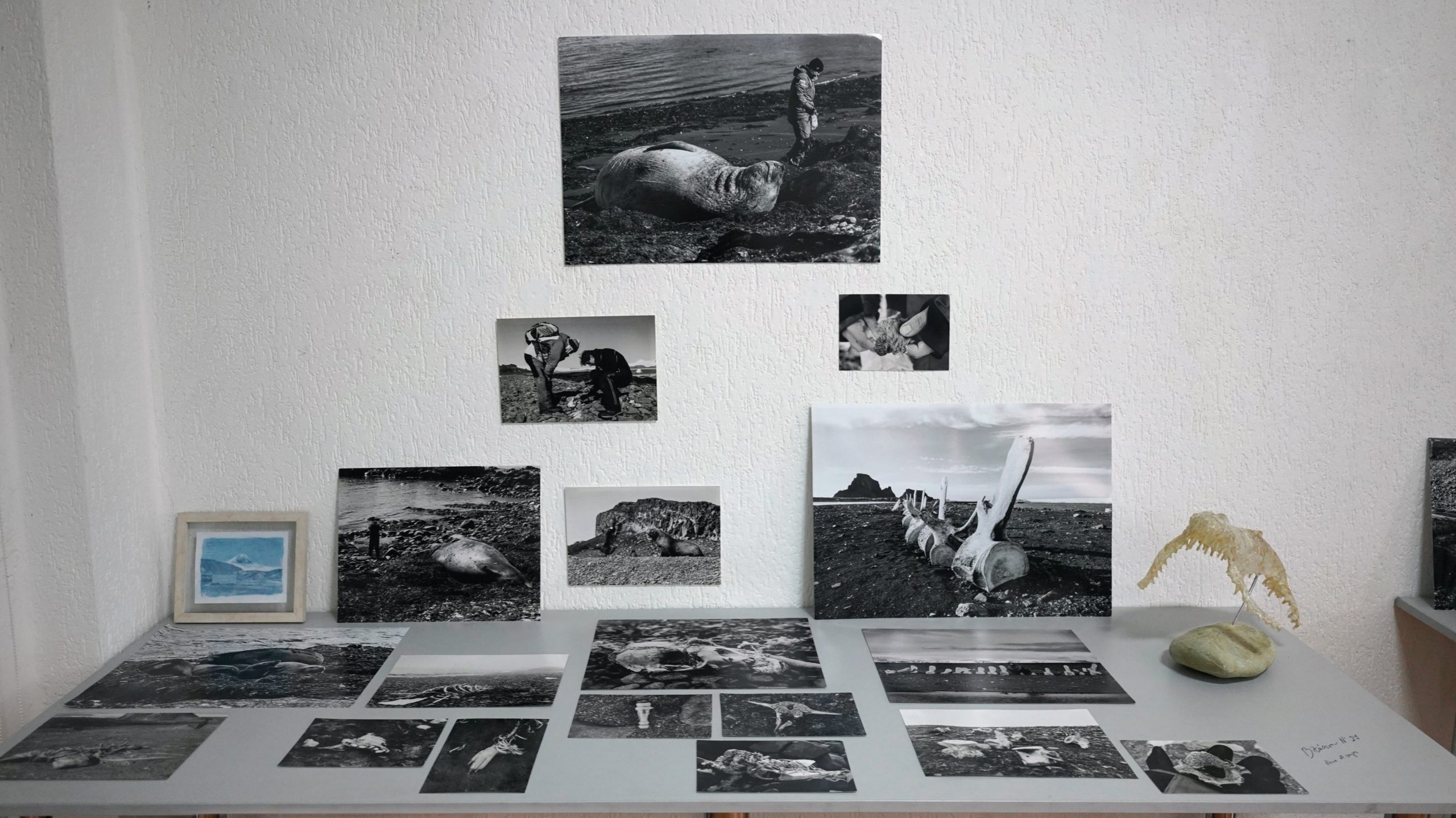
Vestiges of Explorer
Photography
A selection of photographs whose composition and assembly, function as a field diary, explore the relationship between humans and nature, evidenced in the field outings of expedition biologists alongside fossils and animal remains: bones, skins, and feathers. These images document the collection of samples for studies on environmental pollution and species populations in the region. Far from a pristine and desolate Antarctica, the landscape highlights the ephemerality of the natural world. The human presence and the stories contained in these remnants emphasize the role of science in the attempt to understand nature, while confronting the viewer with the harshness of decomposition and the inescapable truths of life and death.
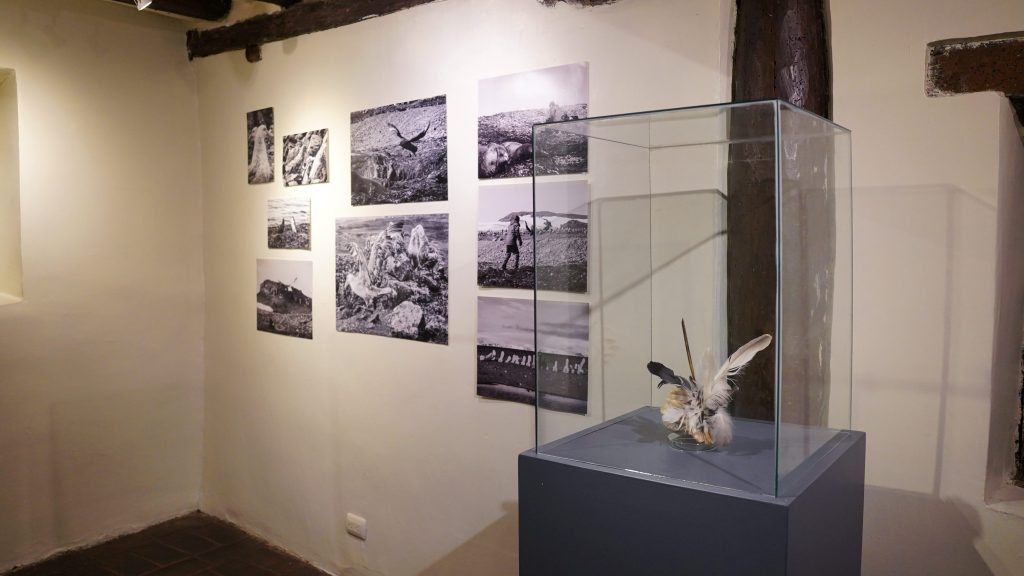
Encouters of coexistence
Shell, penguin, skuas and petrel feathers, Protography prints
Interaction between distant worlds converging in the same space. Through a shell found on Ecuadorian beaches and feathers of polar birds collected on Greenwich Island in Antarctica, the work suggests an improbable meeting between beings that, in nature, might occupy opposing roles as hunters and prey, highlighting how processes of migration, adaptation, and natural cycles transcend geographical boundaries.
The shell, originally a natural refuge for other marine beings, has been transformed into a new environment, occupied by the birds sharing this space, turning it into a refuge or common territory, or even into the convergence that suggests the possibility of a new species.



Letters to the seafarer
Monochannel video, 15 min
The film reconfigures the concept of the heroic journey, moving away from conquest or triumph to reframe exploration as an act of introspection and connection. Antarctica transcends its representation as a physical place, while the ocean and the island serve as metaphors for the unknown and the risk of losing oneself beyond empirical reality when attempting to understand the limits of the natural world. This landscape becomes a mirror of introspection, where not only the vastness of the environment is confronted, but also the depth of internal experiences and existential questions about loss, time, and the fragility of greatness.